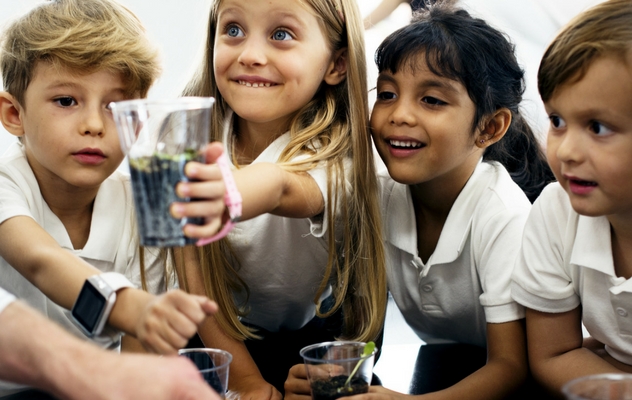
If you were asked to name a scientist or an engineer who would you name?
Would it be someone who you commonly see on TV such as Sir David Attenborough or Professor Brian Cox? Or would you reach into history and call on Issac Newton, Marie Curie or Albert Einstein?
These scientists helped us to understand more about the world we live in, but what about the amazing science that is happening right now?
In the English National Curriculum, it states that children “should be equipped with the scientific knowledge required to understand the uses and implications of science, today and for the future.” How are we supporting our children to do this?
A really good way is to bring the work of current scientists into the classroom. What are the current questions that they are working to solve? Where are they working? Who are they and how do they work?
By talking with our pupils about people who are working as scientists and engineers right now, we are showing them that science is current and that there are still questions that go unanswered. If we just study the scientists of the past, then it can seem as if we have nothing further to explore, which isn’t further from the truth.
How do you engage with scientists and engineers working today?
Think of the topic you are teaching at the moment. Let’s imagine the topic is plants and how they reproduce. A quick internet search will highlight some of the key questions that are being researched in this field. I found this question: “When and how can we simultaneously deliver increased yields and reduce the environmental impact of agriculture?”
The brilliant Crunch resources that came from the Wellcome Trust featured an activity where pupils looked at the use of palm oil and how this has affected wildlife living in countries where palms are grown. A scientist working in this field is Dr Chris Chuck, Bath University, who has been working on an alternative to palm oil, a yeast that grows on waste products.
Something that the children are probably well aware of is the problem of plastics in our oceans. The current call for banning straws and plastic bags is all over the news and a lot of children are leading the charge for this.
In an international research project funded by the Independent Research Fund Denmark, Domenico Sagnelli, together with researchers from the University of Nottingham, are developing plastics from biomass that degrade more easily and quickly than other plastics.
Another very accessible way into the plastics problem is through reading with the children the storybook; Somebody Swallowed Stanley. This has been written by animal behaviourist, Sarah Roberts, to highlight the problems of plastics in the ocean. She is busy producing educational resources that will be free to all schools where the children can experiment with different alternatives to traditional plastics. Your pupils can also follow Sarah’s adventures on her YouTube channel.
Another brilliant place to start with engaging with current science is with the science that is occurring at the Earth’s poles. These once pristine parts of the world are starting to show the effects of global pollution. The scientists working there are asking questions like "What is happening to the ozone layer? How are the ice shelves moving and how this will impact animals who live there?"
Due to its extreme remoteness, they are also able to research into human behaviour, performance, health and wellbeing when removed from civilisation. This will help to inform the scientists working to send humans on extended space missions if we ever intend to explore further into our solar system.
STEM Learning has been working with the British Antarctic Survey, NERC, NOC and BEIS to develop the Polar Explorer Programme. The resources as part of this programme are completely free to download.
Within these activities, there are plenty of opportunities to see what current science is going on in the polar regions. You might even consider joining in with one of the live events where your class can Skype with a scientist at work. These are provided by the scientists working for Digital Explorer.
A few of these resources have also been included in the British Science Week resource packs that are available for schools to download.
Of course, there are many scientists and engineers that are working much closer to home that you can get to come and work with your children in the classroom. The STEM Ambassadors programme connects you with people working in STEM industries and they then can come to your school and help you bring your lessons alive.
